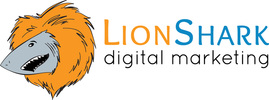Your ad headline is the most dominant part of the ad. It needs to be eye catching and exciting, which is a big task for just 25 characters!
The best way to think about your headline is to imagine that your website has been boiled down from a site with a multitude of pages into one little ad and then that ad has been condensed down further into a short headline. Now what does that headline say?
Your headline should say something meaningful about the site and also use keywords from the ad group. Once you have a solid headline, create different variations to test. Even just rearranging the words in the headline is something that you will want to test. (For instance, if your headline is “25% Off Top Rated Widgets” you can also test “Top Rated Widgets 25% Off.”)
2. Killer Ad Copy
Your ad copy has to compel people to click. Using your company’s value proposition and/or a current promotion is the best way to attract traffic. Obviously, if you’re using a coupon code, you will need to updates the ads frequently to ensure that you are not wasting impressions on ads with outdated promo codes, but doing so usually results in a measurable lift in Click-Through-rate (CTR – the percentage of people who see your ad and then click on it).
Again, testing your ad text is very important. Test different value propositions, offers and calls-to-action to get the best results. You can create ad versions with these elements in a different order within the ad or with different punctuation.
3. Real Estate-Snatching Ad Extensions
Ad extensions do exactly what they would imply – they extend your regular text ads with additional information like a business phone number, links to other pages of your site, company highlights, reviews, etc. Ad extensions increase the size of your ads, which means that they’ll steal search engine results page (SERP) real-estate away from your competitors.
You don’t have to choose between ad extensions if more than one type appeals to you and makes sense for your business because they work together. This means, for instance, that if you create sitelink extensions and callout extensions, Google will beef up your ad with both to create a super-ad that is sure to get attention!
4. A Hyper-Focused Landing Page
The destination URL for your ads should be a landing page that is hyper-focused around the theme of the ad group. For ecommerce sites this means sending traffic to product pages or sub-category pages and for lead generation sites this often means sending traffic to sign up pages or quote request forms.
Getting people as close as possible to what they are searching for on your site improves conversion rates because it does not leave them finding the right page to chance. It also makes searchers more satisfied, which can lead to increased time on site and a positive brand impression.
Need help with your AdWords? Why not leave your PPC management to us! You can request a free, no obligation, AdWords Audit and based on our findings and recommendations decide whether you would prefer to do the work yourself or get a PPC specialist to do it for you.
Kate Pierce is the owner of LionShark Digital Marketing LLC, a West Michigan internet marketing company. Her areas of expertise include Paid Search, Search Engine Optimization, Social Media, Web Consulting for small businesses, Copywriting and Local Online Marketing. She lives in the Grand Rapids area with her husband and enjoys cooking, watching sports and spending time outdoors. Like a true digital marketing expert (i.e. geek), she loves talking about marketing theory and SEM trends… so don’t say you weren’t warned!


 RSS Feed
RSS Feed
